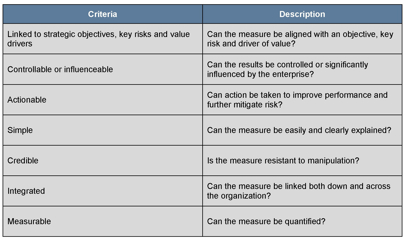This old adage is more
than a saying—it's a powerful aspect of human nature, especially in our data-
and incentive-driven world. In fact, at times, it may even be too powerful. While
business process measurement is critical, managing by measurements alone can
result in unintended consequences.
Some people say, "If you're not
measuring, then you're only practicing." Which is it for you?
There are literally
hundreds of sources touting various types of measurements, including specific metrics
for different business processes and industries. Public company stock analysts,
and companies themselves, may report key measurements in their Form 10-K annual
report to shareholders and as part of their quarterly press releases and
analyst conference calls. Many industry associations report measurement information
on their members, often to help their membership improve the relevant areas of
their business overall and within specific business processes. Organizations
should seek out such information and find the best sources and concepts that
can help them be more effective.
However,
the measurements an organization selects and uses must work for its unique
demands and circumstances. They have to help executives, department leaders and
individual business owners manage better, make more accurate decisions and
improve performance more distinctly and faster.
A few basic types of business
process measurements include:
- Input
- Quality
- Process
- Cost
- Output
- Time
These measurements relate to
many things, e.g., price, volume, mix, innovation and compliance, among other
things.
Measurements in a vacuum are just that—empty. They become meaningless, or worse, counter-productive
when there is no comparative context. For measurements to be meaningful, there
must be something against which to compare them, for example, last year, last
month or even yesterday. Desirably, an organization's key measurements should
be linked to the strategy and business plan, and targets should be set.
Comparisons to similar
branches or individuals within groups, such as sales, production or service, will
yield results to help the organization improve. While comparisons to goals,
budgets and targets, including stretch targets, all will help management make
better decisions and take timely corrective action.
 Measurement Key Indicator Characteristics Click here to enlarge image» |
Before measurements can be
finalized, they must be screened to ensure they meet the requirements of a key
indicator versus a mere operating or financial statistic. To be selected as a
key indicator, the measurement must possess all seven characteristics.
In
addition, benchmarking measurements with other companies—peers, competitors and
leading-edge and world-class organizations, should not be overlooked. In fact,
holding a benchmarking session or roundtable in one or more of the
organization's local markets may help it refine and improve its measurement processes,
as well as set new goals around key measurements.
Finally,
measuring is not a destination, but rather a journey. Organizations should
adopt the concept of continuous improvement into their thought processes and
"never be fully satisfied"—there is always more to be done and higher levels to
achieve. Making big plans, setting tough goals and almost getting there is generally
much better than simply settling for and achieving smaller, less lofty goals. Any
company would be well-served to "shoot for the moon" and see how close it can
come. Think of measurements as an
alignment tool. They help align processes and people with the organization's
strategy and business plan.
With company ERP systems, the Internet, spreadsheets, data warehouses and other enhanced
data sources, the ability and capability to measure have increased exponentially
because of all of the data available. This allows a company to connect much
more information than in the past in the form of key measurements. Organizations
should take advantage of this technology to generate real-time, continuously
streaming information where that degree of timeliness is warranted.
More and more
organizations today are adopting continuous monitoring, data mining and data
analytic techniques to improve their management capabilities. However, it is
important that they avoid taking this approach too far. Not every measure a
company develops needs to be reported daily or more than daily.
Too many
measures can be just as bad as too few. For this reason, the use of a "balanced
scorecard" is best practice when assessing measures to look at and act upon.
Both words, in fact, are important. Balanced reflects an appropriate and
action-compelling mixture of financial and non-financial measures, each
compared to relevant targets and other time periods within a single, concise
report. Scorecard denotes the ability to glean important, actionable
information swiftly.
One
important measurement of a balanced scorecard is length: If the scorecard
cannot fit on to one piece of paper (two-sided printing is acceptable), then
there likely are too many measures and too much information. Another important
element is presentation. When it comes to an effective scorecard, "A picture is
worth a thousand words." Organizations should incorporate rich colors and graphics
to make their scorecards as visually appealing as possible. Finally, no
scorecard will work if it is not accurate. Organizations must delve into the
integrity of the numbers and information that drives their scorecards and be
sure they have accuracy. Making what seems to be the right decision on the wrong
information can be catastrophic—data integrity matters. The goal is to ensure
"one version of the truth" so that decisions can be made in a timelier manner.
Most measurements are related to various business "objectives," such as profit, return on
investment, cost, opportunity, efficiency, etc., but what about the other side
of the coin—risk? Recently, risk measures have become an added dimension to businesses
and the business process landscape. In fact, public companies today must
disclose the role of their board in the risk oversight process. This means that
something must actually exist (a risk management process) in order for that something to be overseen. This is
critically important considering that missteps in the financial services
industry, resulting from ineffective or lack thereof risk management processes (and
measurements), continue to dominate the news. It is the task of all process
leaders to consider the question, "What can go wrong?" As part of this, there should
be some risk measurement, monitoring and reporting activity.
While
some will surely disagree, businesses and their key processes are more than
just measurements. There is a human element that shouldn't be forgotten and one
that organizations may not be able to measure fully. Business is still about
people: If companies can harness enthusiasm, dedication, commitment and loyalty
from their people, all of the other measurements will come. Thus, while it is
important to measure and measure well, it also is vital to think beyond
measurements and consider the human aspects of any organization and the people that
management oversees, controls, influences, develops and leads.
Finally,
remember the carpenter's rule: "Measure twice, cut once."
BOB HIRTH is executive vice president for Protiviti, a global
business consulting and internal audit firm. His responsibilities for the last 10
years have included providing leadership, strategic direction and practice
infrastructure support for Protiviti's global Internal Audit and Financial
Controls practice. For more, visit www.protiviti.com.













